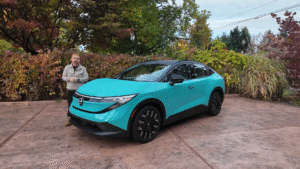Car Color Trends 2025: What the Data Says About Your Next Ride

In 2025, the automotive industry is dealing with supply chain pressures, rising labor costs, sustainability demands, and the need for flexible inventory. The dominance of neutral colors is not simply a matter of conservative taste: it’s an operational strategy.
In the Americas region, grey has quietly grown its share to nearly 20% of the market, while white slipped roughly 5 points and black declined about 2 points. (See BASF report.) This shift matters because it signals that even neutrals are changing, and if you’re buying a vehicle now, your color choice could affect resale value, availability, and delivery time.
Then there’s the fleet effect. Large rental and corporate-fleet buyers favor white or black because buyers of used fleets will accept more neutral colors, thereby keeping remarket values stronger. That means when you visit the showroom, your “personal” car color is actually the same one assigned to thousands of rental units.
On top of that, manufacturers and paint shops argue that reducing the number of colors they have to paint each day simplifies logistics, speeds throughput, and cuts costs by using fewer pallets and faster production.
Meanwhile, the innovation labs are quietly introducing new color directions. BASF’s new “Automotive Color Trends 2025-26” collection names regional key colors such as AUXETIC NEUTRAL (Americas), TESSERACT BLUE (EMEA), and PHYGITAL MAGNETAR (Asia–Pacific). These aren’t just show-car fantasies; they’ll hit showrooms in the coming years.
How does it compare to rivals?
When you compare car-color trends to adjacent purchasing decisions, powertrain, safety tech, and connectivity, you’ll note that paint doesn’t garner as much attention. Yet it has a hidden impact.
Other vehicle decisions (hybrid vs plug-in vs pure EV, ADAS suite, infotainment) are influenced by consumer-facing messaging. Color is more subtle, yet it intersects with resale value, supply-chain risk, and manufacturing volume. For example, a vehicle trimmed with a rare chromatic color may cost more and see slower turnover than one with a standard neutral.
According to Kelley Blue Book, achromatic colors remain the most popular and the safest for resale. Paint experts say the color you select today may influence how many buyers consider your car when you sell it three to five years hence.
In the wider auto sector, the palette shift is modest but telling. In the EMEA region, achromatic rose from around 72% in 2021 to almost 80% by 2024. That’s not as dynamic as EV adoption curves or autonomous-driving milestones, but it reflects the conservative back-end of the business: what you see may feel novel, but the engine of change is more incremental than revolutionary.
If you look at EV makers and their early adopters, you’ll find more daring colors cropping up, neoteric yellow, digital teal, molten magenta. These help differentiate premium and novelty models. But the mass-market remains anchored to neutrals.
Who is this for, and who should skip it?
If you’re in the market for a new car over the next twelve months and you care about resale value, maintenance, and broad appeal, this article is for you. Understanding which colors dominate production and resale markets gives you a sharper lens when selecting your next ride.
If you’re someone who values bold personal expression, color may be a key part of your purchase. But you should go in with your eyes open: chromatic colors will likely hit you with longer match-times, reduced availability, and potentially weaker resale trade-ins.
For fleet buyers, corporate-lease managers, and anyone thinking “I’ll sell this in three years”, choosing a mid-grey, warm-beige, or one of the newly trending neutrals may be the smarter move. For buyers of niche models, limited editions, or custom builds who see the car as a statement rather than an investment, full-on color freedom remains available, but you’ll pay for it in logistics and resale risk.
What is the long-term significance?
Color may seem the least technical of car attributes, yet it is embedded in the manufacturing ecosystem: paint-shop throughput, pigment sourcing, emissions compliance, logistics frameworks, and remarket strategies. The long-term significance of the 2025-26 trends is that they air-lift color into the strategic center of vehicle design.
As OEMs shift to EVs, autonomous modules, and subscription models, vehicle lifecycles compress and resale models change. A safe neutral today may maintain value better in a world where mobility rentals, shared fleets, and short-term ownership dominate. That means choosing a car color with flexibility may become more important than ever.
At the same time, the design studios are readying bolder palettes. The three key colors from BASF’s 2025-26 collection, AUXETIC NEUTRAL, TESSERACT BLUE, and PHYGITAL MAGNETAR, hint at a future where surfaces carry meaning beyond the mechanical. These will matter first in premium models, then trickle down into mainstream segments. You may look back in five years and say your mid-grey car was ahead of trend, not just safe.
In short, when you pick the color of your next car, you’re picking more than how it looks. You’re choosing how it will fit into manufacturing pipelines, resale markets, and the wider mobility ecosystem. Choose wisely, and maybe not purely for vanity.







